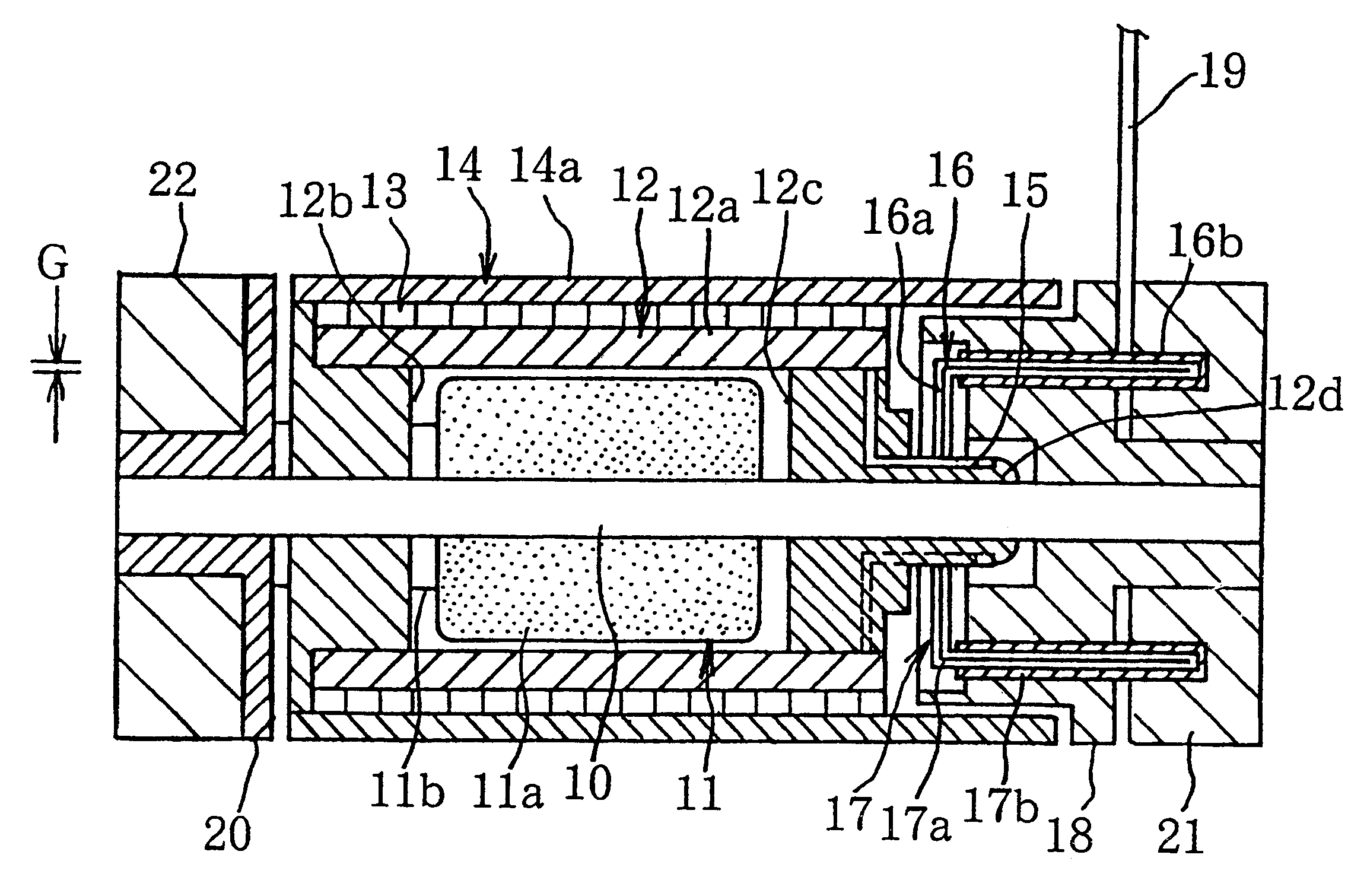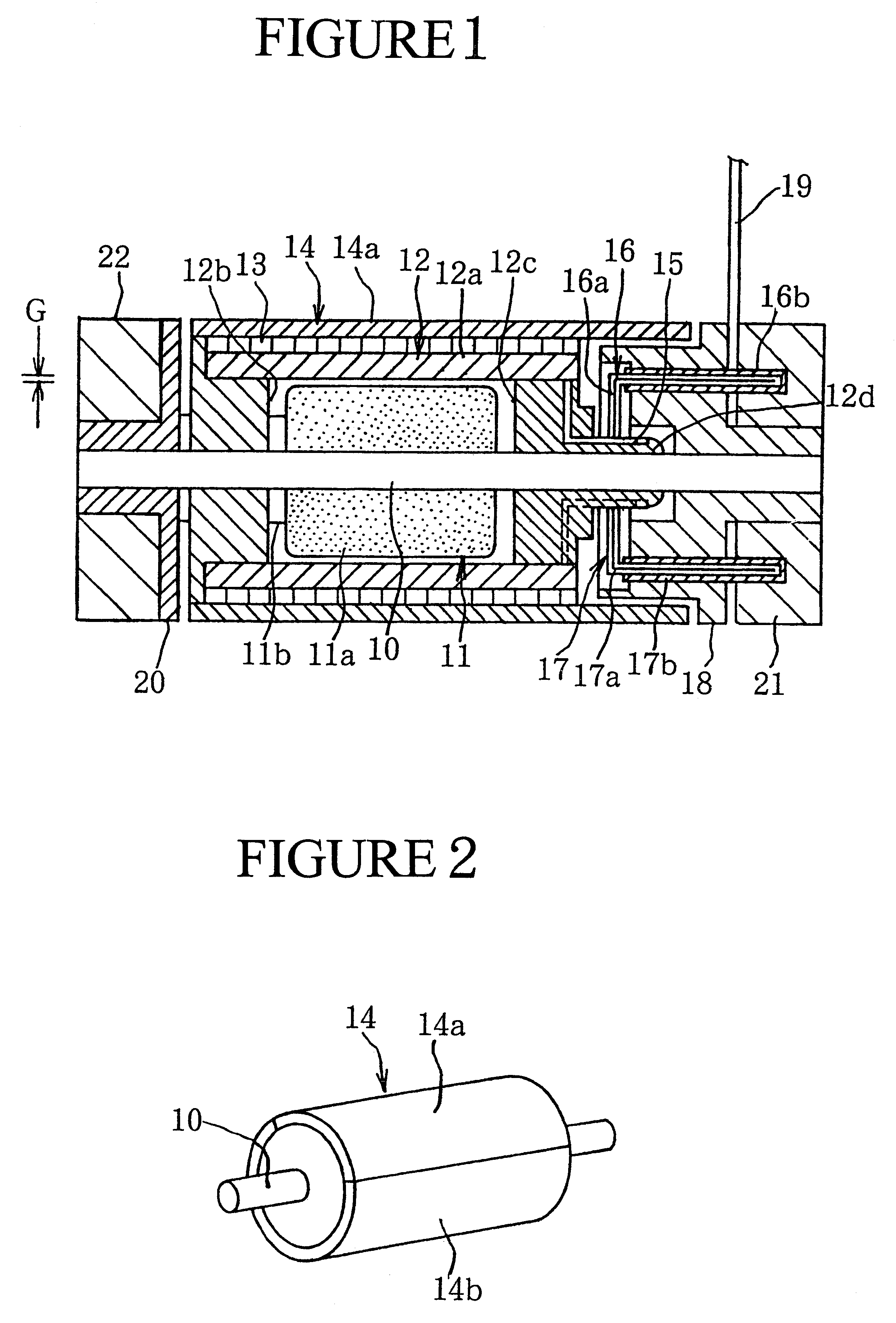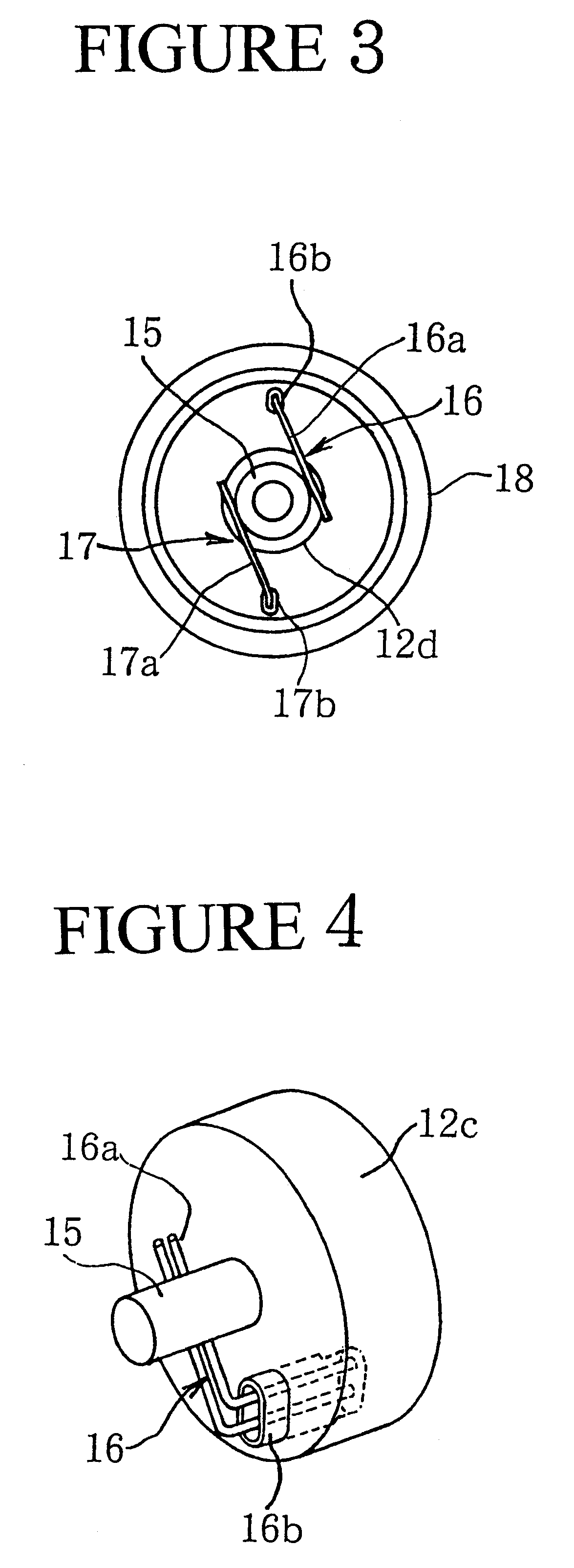Small-sized coreless motor
- Summary
- Abstract
- Description
- Claims
- Application Information
AI Technical Summary
Benefits of technology
Problems solved by technology
Method used
Image
Examples
Embodiment Construction
This invention is explained in detail below, with reference to FIGS. 1 to 8. This invention constitutes a coreless miniature motor, or coreless motor or gyro rotor, used to generate vibrations. In place of the conventional motor assembled with a rotating shaft and a rotor that includes a coil, the coreless miniature motor has, as shown in FIG. 1, a main part which is a fixed shaft 10 held in place on both ends by brackets attached as described below, assembled with a stator 11, a rotor 12 and other parts, and with the rotor 12 also serving as an eccentric weight.
With the fixed shaft 10 as the main part, the stator 11 has the fixed shaft 10 inserted in a central position; the field magnet 11a is fitted onto the shaft roughly at its center, with its position along the axis determined by a spacer 11b.
The rotor 12 comprises a cylindrical coil 12a that contains within its inner diameter the field magnet 11a separated by a slight gap G, and rotor plates 12b, 12c that are free to turn on t...
PUM
 Login to View More
Login to View More Abstract
Description
Claims
Application Information
 Login to View More
Login to View More - R&D
- Intellectual Property
- Life Sciences
- Materials
- Tech Scout
- Unparalleled Data Quality
- Higher Quality Content
- 60% Fewer Hallucinations
Browse by: Latest US Patents, China's latest patents, Technical Efficacy Thesaurus, Application Domain, Technology Topic, Popular Technical Reports.
© 2025 PatSnap. All rights reserved.Legal|Privacy policy|Modern Slavery Act Transparency Statement|Sitemap|About US| Contact US: help@patsnap.com



